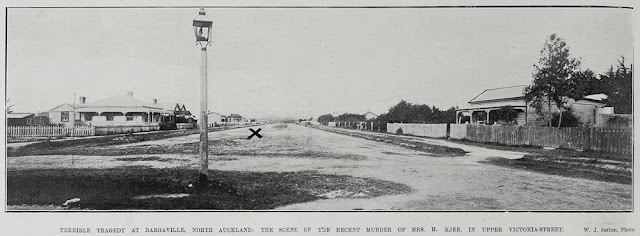Pukekaroro Tramline
 |
| Sir George Grey Special Collections, Auckland Libraries, AWNS-19050216-12-1 |
The tramline came into existence during 1886 when Francis Mander wanted to exploit the vast kauri forest resource located on and around Pukekaroro. Pukekaroro itself has a strong historical association with Te Uri o Hau.
The tramline itself was constructed of kauri – running from the maunga heights and down into the inlet on the shores of the inner-Kaipara where logs were gathered into booms and towed away to be milled further along the coastline. Mander formed a partnership with Samuel Bradley under Bradley and Mander in 1886 after opening up a large tract of kauri forest – the partnership lasted 20 years and included milling of other forest areas around Northland and in the Waitakere Ranges in Auckland region. In 1888, the Kauri Timber Company was formed and amongst the multiple purchases the new company made was Bradley and Mander’s stands of kauri at Pukekaroro. In December of the same year, Mander and his family left Pukekaroro for Mangere in Auckland.
Under the management of the Kauri Timber Company, the tramline was also used as part of the road to travel to nearby Kaiwaka. During its years in operation, Otamatea County Council wrote more than once to the company complaining of the poor condition the tramline was in. A spate of accidents ranging from trucks carrying the logs down to the waterline coming off the rails, to the fatal accident of a bush contractor named William Booth being cut in half by a runaway log. Booth was laid to rest in the Maungaturoto Anglican Cemetery after the accident.
 |
| Sir George Grey Special Collections, Auckland Libraries, AWNS-19050216-1-1 |
In 1896, the Kauri Timber advised the Otamatea County Council it would be removing the tramline from Pukekaroro now the kauri timber reserves were all but exhausted.
The tramline also became part of the 1938 fictional novel The Story of a New Zealand River written by novelist Jane Mander, a daughter of Francis Mander. Today, the kauri lost to milling are again regenerating on the slopes of Pukekaroro – with less than 4,000 hectares of original kauri forest remaining every tree left is precious.


Comments